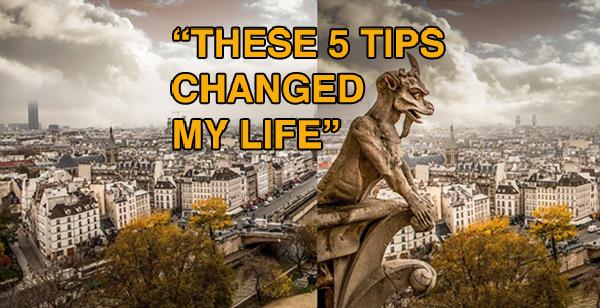5 Pro Tips for EPIC Travel & Nature Photos (VIDEO)

When one of our favorite photographers says, “these five tips changed my life” we pay attention, and you should too. We can’t promise that the video below will be a life-changing event, but it will definitely help you shoot far better photos.
Serge Ramelli is an acclaimed French photographer, and a great instructor, with a portfolio of awesome travel, nature and cityscape images captured across the globe. The topic of today’s episode is composition, and Ramelli explains the framing techniques that make his imagery so compelling.
One’s approach to composition is admittedly somewhat of a subjective affair. But there’s a variety of conventional wisdom deserving of attention, and Ramelli covers that. But the real meat of this tutorial is the approach Ramelli has devised throughout his long and successful career.

As an adept visual storyteller, Ramelli’s tips have a lot to do with developing that skill. He begins with his favorite definition of composition, which is “the arrangement of elements within a work of art to convey a message.” And that’s what you’ll learn to do by watching this video.
Ramelli quickly reviews the familiar “Rule of Thirds,” and he explains how he employs this approach for different purposes. Interesting, Ramelli says he first understood the power of this technique by studying Hollywood films like “Forrest Gump.”

The other techniques Ramelli uses are geared toward adding depth to a scene, or increasing drama in a way that guides a viewer’s eyes through an image. One of the methods he applies often is using leading lines in creative ways.
Ramelli always scrutinizes scenes carefully to make the best use of objects in the foreground, background, and everything in between, which often calls for important decisions with regard to camera settings and focusing techniques. He also explains why he always looks for a “frame within a frame” when composing a scene.
You can find more shooting and editing tips on Ramelli’s YouTube channel and in the tutorial we posted recently from another pro, explaining how to use “hyperfocal distance” to control depth of field.
- Log in or register to post comments
















































